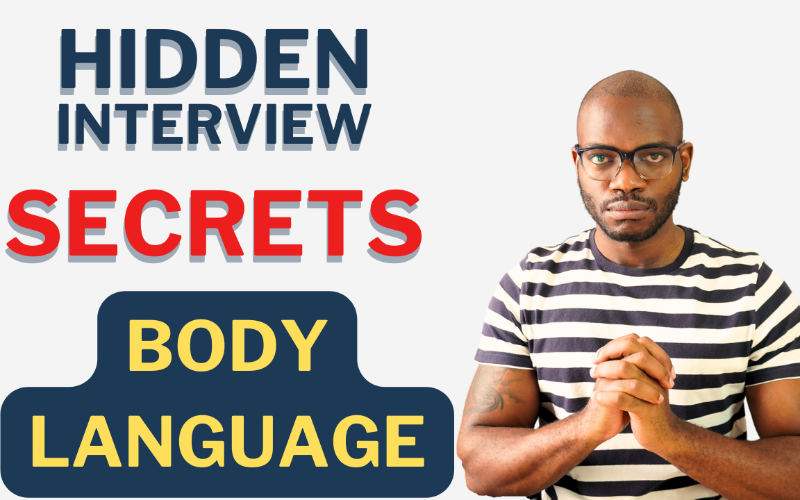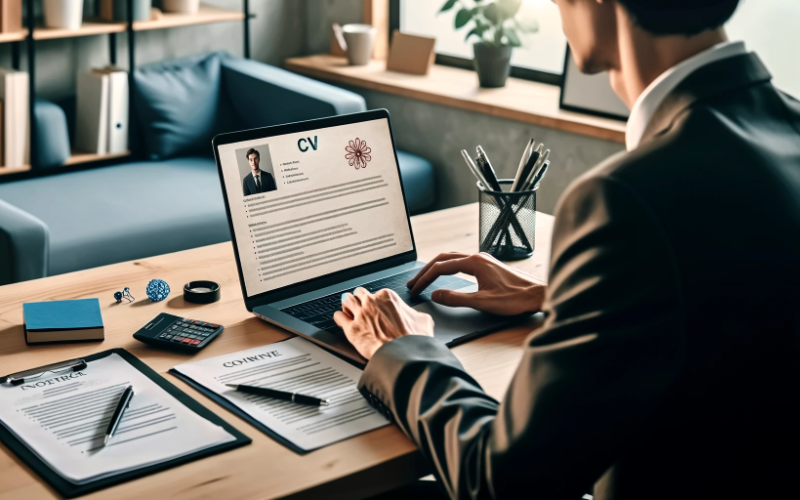Ever wondered why some individuals excel in interviews, seemingly effortlessly? It's not just their words but their nonverbal cues that make a significant impact. Today, we explore the "Top 5 Body Language Tips for Interview Confidence," transformative strategies that can shift your interview experience from nerve-wracking to empowering.
Research highlights the crucial role of nonverbal communication, particularly in high-stress situations like interviews. It's a complex blend of what you say, how you say it, and crucially, how you physically present your message.
Tip 1: Making a Powerful First Impression
The Impact of First Impressions
First impressions in interviews are paramount. The moment you enter the room, your body language starts to weave a narrative about your confidence and professionalism. Ensuring this narrative reflects positively on you is crucial.
Mastering the Art of Greeting
A firm handshake represents confidence and respect, setting a positive tone. Accompany this with a genuine smile and direct eye contact to further establish a connection. However, in situations where handshakes are inappropriate due to health concerns or cultural differences, a polite nod, coupled with a warm smile and steady eye contact, can effectively convey the same level of professionalism.
Perfecting Your Entrance
How you walk in and carry yourself during those initial seconds speaks volumes. Practice your entrance, from your greeting to your walk and stance, to make your first impression not just good, but exceptional.
Tip 2: Maintaining Confident Posture
The Language of Posture
Your posture in an interview can tell a compelling story about your confidence and attitude. It's essential to sit tall and present an image of engagement and assurance. Slouching or leaning too far back can give an impression of disinterest or casualness, which is not the image you want to convey.
Balancing Relaxation and Alertness
An upright, yet relaxed posture indicates that you are present and confident in the situation. Plant your feet firmly on the ground to ground yourself physically and mentally. Avoid crossing your arms or legs in a way that might seem defensive.
Using Gestures Effectively
Place your hands on your lap or use them to gesture naturally as you speak. Your body language should invite conversation, showing that you're open and ready to engage. While being attentive, allow for natural movements; being too rigid can appear unnatural.
Incorporate 'interview posture' into everyday situations, like dining or working at your desk, to develop a habit that will come naturally during interviews.
Tip 3: Mastering Eye Contact
Eyes as Communication Tools
In interviews, eye contact is more than a courtesy; it's a tool for building rapport, showing respect, and indicating full attention. However, it's essential to strike the right balance to avoid intimidating or appearing disinterested.
Maintain eye contact to demonstrate engagement, but avoid staring, which can be off-putting. When listening, solid eye contact shows absorption in the conversation, while speaking allows for occasional glances away to gather thoughts without breaking the connection.
The 'Triangle' Technique
A practical method is to envision a triangle, shifting your gaze gently between the interviewer’s eyes and mouth. This technique ensures your eye contact is natural and engaging, avoiding the intensity of a constant stare.
Eye contact can convey sincerity and confidence. Practice with friends or in front of a mirror to find a comfortable and authentic balance that complements your communication style.
Tip 4: Utilizing Hand Gestures
Enhancing Communication with Gestures
Hand gestures, when used appropriately, can significantly reinforce your spoken words, making your points more impactful and demonstrating your enthusiasm. It's crucial to find a balance where your gestures enhance rather than distract from your message.
Illustrate your points with gestures, such as counting on your fingers to emphasize a list, or using open palms to signify honesty and openness. These movements can help punctuate your speech and make your messages more memorable.
Avoiding Over-Gesturing
Be cautious of excessive or repetitive movements, which can be distracting. Aim for smooth, purposeful gestures that align with your spoken words. Adapt your hand movements to the interview setting to maintain a comfortable and effective communication space.
Rehearse your interview responses while focusing on how your gestures complement your speech. This practice can help integrate gestures naturally into your communication style, ensuring they enhance rather than overshadow your words.
Tip 5: Demonstrating Active Listening
Engagement Beyond Words
Active listening is not merely waiting for your turn to speak but fully engaging with the interviewer's words. It’s about showing through your body language that you are genuinely absorbing and considering the information shared.
Signals of Active Engagement
Nodding at key points, maintaining eye contact, and offering verbal affirmations like "I see" or "That makes sense" are effective ways to demonstrate active listening. However, these cues should be used judiciously to avoid appearing insincere.
The Art of Mirroring
Mirroring the interviewer’s positive body language subtly can foster rapport and create a sense of harmony in the conversation. If the interviewer leans in to make a point, mirroring this action can show attentiveness and engagement.
Active Listening as a Skill
Active listening is a dynamic skill that involves both mental and physical presence. By mastering this art, you not only gain insights from the conversation but also convey respect and interest, enhancing the interview dialogue.
These top 5 body language tips, from making a memorable first impression to mastering active listening, are essential in conveying professionalism, confidence, and readiness for the role. Body language is a silent yet powerful communicator that, with practice and awareness, can significantly boost your interview performance, enabling you to approach opportunities with renewed confidence.








